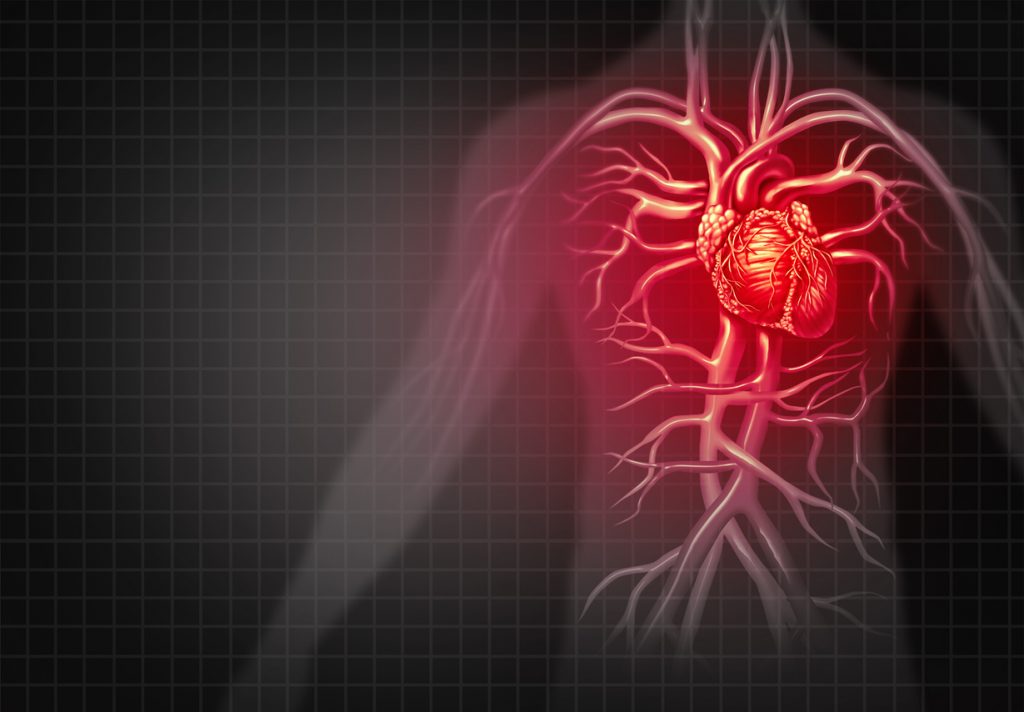The BARI 2D (Bypass Angioplasty Revascularization Investigation in Type 2 Diabetics) trial is a multicenter study that uses a 2×2 factorial design, with 2800 patients being assigned at random to initial elective revascularization with aggressive medical therapy or aggressive medical therapy alone with equal probability, and simultaneously being assigned at random to an insulin providing or insulin sensitizing strategy of glycemic control (with a target value for HbA1c of <7.0% for all patients). dThe BARI 2D (Bypass Angioplasty Revascularization Investigation in Type 2 Diabetics) trial is a multicenter study that uses a 2x2 factorial design, with 2800 patients being assigned at random to initial elective revascularization with aggressive medical therapy or aggressive medical therapy alone with equal probability, and simultaneously being assigned at random to an insulin providing or insulin sensitizing strategy of glycemic control (with a target value for HbA1c of <7.0% for all patients). A. Primary AimThe primary aim of the BARI 2D trial is to test the following two hypotheses of treatment efficacy in 2800 patients with Type 2 diabetes mellitus and documented stable CAD, in the setting of uniform glycemic control and intensive management of all other risk factors including dyslipidemia, hypertension, smoking, and obesity: 1. Coronary Revascularization Hypothesis: a strategy of initial elective revascularization of choice (surgical or catheter-based) combined with aggressive medical therapy results in lower 5-year mortality compared to a strategy of aggressive medical therapy alone; 2. Method of Glycemic Control Hypothesis: with a target HbA1c level of <7.0%, a strategy of hyperglycemia management directed at insulin sensitization results in lower 5-year mortality compared to a strategy of insulin provision. B. Secondary AimsThe secondary aims of the BARI 2D trial include: a) comparing the death, myocardial infarction or stroke combined endpoint event rate between the revascularization versus medical therapy groups and between the insulin sensitization versus insulin provision groups; b) comparing rates of myocardial infarction, other ischemic events, angina and quality of life associated with each revascularization and hyperglycemia management strategy; c) evaluating the relative economic costs associated with the trial treatment strategies, d) exploring the effect of glycemic control strategy on the progression and mechanism of vasculopathy including changes in PAI-1 gene expression. Condition Treatment or Intervention Phase Coronary DiseaseCardiovascular DiseasesHeart DiseasesInsulin ResistanceDiabetes MellitusDiabetes Mellitus, non-insulin dependent Procedure: Angioplasty, Transluminal, Percutaneous Coronary Procedure: Coronary Artery Bypass Drug: Hypoglycemic Agents Phase III MedlinePlus related topics: Circulatory Disorders; Coronary Disease; Diabetes; Heart Diseases; Heart Diseases--Prevention; Metabolic Syndrome XStudy Type: InterventionalStudy Design: Treatment, Randomized, Factorial Assignment Further Study Details: BACKGROUND: Type 2 diabetes mellitus, which is becoming more prevalent in our society as the population ages, is one of the strongest risk factors for coronary artery disease (CAD) and consequent mortality. In addition to generating an enormous toll in human suffering, diabetes places an economic burden approaching 100 billion dollars annually on the U.S. health care system. Despite the well known dismal prognosis of diabetes complicated by angiographically documented CAD, the optimal treatment paradigm for this large group of patients has not been studied. Coronary revascularization, while increasingly used, has not been directly shown to be of additional benefit to simultaneous intensive medical management of CAD along with management of hyperglycemia, hypertension, dyslipidemia, and other risk factors. Moreover, while intensive efforts to lower HbA1c have been demonstrated to favorably affect the clinical course of Type 2 diabetes mellitus in terms of microvascular complications, the optimal hyperglycemia management strategy with regard to macrovascular outcome is not known. These critical treatment dilemmas have motivated the development of BARI 2D, a multicenter randomized trial designed to determine in patients with Type 2 diabetes and stable CAD: 1) the efficacy of initial elective coronary revascularization combined with aggressive medical therapy, compared to an initial strategy of aggressive medical therapy alone; and 2) the efficacy of a strategy of providing more insulin (endogenous or exogenous), versus a strategy of increasing sensitivity to insulin (reducing insulin resistance), in the management of hyperglycemia, with a target HbA1c level of < 7.0% for each strategy. DESIGN NARRATIVE: The BARI 2D trial is a multicenter study that will use a 2x2 factorial design, with 2800 patients being assigned at random to initial elective revascularization with aggressive medical therapy or aggressive medical therapy alone with equal probability, and simultaneously being assigned at random to an insulin providing or insulin sensitizing strategy of glycemic control (with a target value for HbA1c of <7.0% for all patients). Following confirmation of patient eligibility and provision of written consent, patients will be randomized as shown below: Number of Patients Per Treatment Assignment Revascularization Strategy Revascularization MedicalGlycemic Control Strategy Insulin Providing (IP) 700 700Insulin Sensitizing (IS) 700 700 Eligibility Genders Eligible for Study: Both Criteria Inclusion Criteria for BARI 2D 1. Diagnosis of Type 2 diabetes mellitus. 2. Coronary arteriogram showing one or more vessels amenable to revascularization (=50% stenosis). 3. Objective documentation of ischemia OR subjectively documented typical angina with =70% stenosis in at least one artery. 4. Suitability for coronary revascularization by at least one of the available methods (does not require the ability to achieve complete revascularization). 5. Ability to perform all tasks related to glycemic control and risk factor management. 6. Age 25 or older. 7. Informed written consent. Exclusion Criteria for BARI 2D 1. Definite need for invasive intervention as determined by the attending cardiologist. 2. Prior bypass surgery (CABG) or prior catheter-based intervention within the past 12 months. 3. Planned intervention for disease in bypass graft(s) if the patient is randomized to a strategy of initial revascularization. 4. Class III or IV CHF. 5. Creatinine > 2.0 mg/dl. 6. HbA1c > 13%. 7. Need for major vascular surgery concomitant with revascularization (e.g., carotid endarterectomy). 8. Left main stenosis > 50%. 9. Non-cardiac illness expected to limit survival. 10. Hepatic disease (ALT> 2 times the ULN). 11. Fasting triglycerides > 1000 mg/dl in the presence of moderate glycemic control (HbA1c <9.0%). 12. Current alcohol abuse. 13. Chronic steroid use judged to interfere with the control of diabetes, exceeding 10 mg. of Prednisone per day or the equivalent. 14. Pregnancy, known, suspected, or planned in next 5 years. 15. Geographically inaccessible or unable to return for follow-up. 16. Enrolled in a competing randomized trial or clinical study. 17. Unable to understand or cooperate with protocol requirements. Patients with Type 2 diabetes mellitus and CAD documented by coronary arteriography will be eligible for the trial if revascularization is not required for prompt control of severe or unstable angina. Diabetic patients who are being treated with insulin or oral hypoglycemic drugs will be eligible as well as diabetic patients treated with diet and exercise alone provided that a diagnosis of diabetes can be confirmed by record review or that a fasting plasma glucose (FPG)>125/mg/dl (7.0 mmol/l) can be obtained. The determination of suitability for BARI 2D will be made by a physician-investigator at each participating institution on clinical grounds at the time of coronary angiography. Significant CAD will be defined as at least one stenosis >50%. Angina and ischemia will be assessed by use of patient self-report, physician examination, and appropriate diagnostic measures including exercise myocardial perfusion imaging, exercise echocardiography, and IV dipyridamole or adenosine myocardial perfusion imaging or invasively by doppler or pressure wire. Objective documentation of myocardial ischemia includes any of the following: 1. Exercise or pharmacologically-induced:a. =1 mm of horizontal or downsloping ST depression or elevation for =60-80 milliseconds after the end of the QRS complex; b. myocardial perfusion defect; c. myocardial wall motion abnormality. 2. Stabilized, prior acute coronary syndrome with CK-MB or troponin elevation or with new, =0.5 mm ST depression or elevation, or T wave inversion of =3 mm in 2 contiguous ECG leads. 3. Doppler or pressure wire showing coronary flow reserve (CFR) <2.0 or fractional flow reserve (FFR) <0.75.Among patients without documented ischemia, only patients with stenosis = 70% presenting with classic anginal symptoms will be eligible for randomization. [1] National Heart, Lung, and Blood Institute (NHLBI)[2] National Institute of Diabetes and Digestive and Kidney Diseases (NIDDK)[3] Bernard Chaitman, St. Louis University [4] Katherine Detre, University of Pittsburgh [5] Mark Hlatky, Stanford University [6] Burton Sobel, University of Vermont & State Agricultural Colleg
All content and media on the HealthEngine Blog is created and published online for informational purposes only. It is not intended to be a substitute for professional medical advice and should not be relied on as health or personal advice. Always seek the guidance of your doctor or other qualified health professional with any questions you may have regarding your health or a medical condition. Never disregard the advice of a medical professional, or delay in seeking it because of something you have read on this Website. If you think you may have a medical emergency, call your doctor, go to the nearest hospital emergency department, or call the emergency services immediately.







